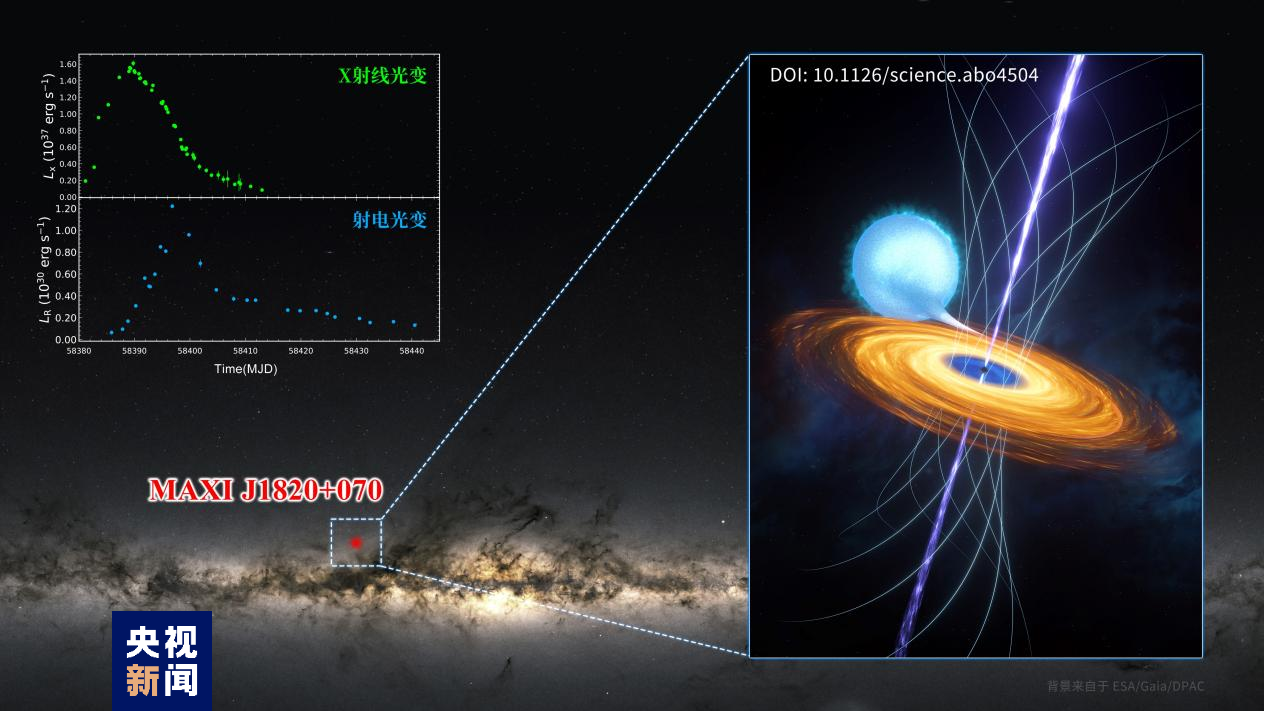
A computer-generated image shows telescope observations of an outburst from the black hole x-ray binary MAXI J1820+070 in 2018. /CMG
A computer-generated image shows telescope observations of an outburst from the black hole x-ray binary MAXI J1820+070 in 2018. /CMG
An international team led by Chinese scientists researching black holes has reported the first direct observational evidence of a magnetically arrested disk (MAD), which will help shed light on black hole magnetic field formation and the dynamics of jet.
Black holes are extremely compressed cosmic objects predicted by Einstein's theory of general relativity. They have a gravitational pull that is so intense that nothing, not even light, can escape it once inside a certain region called the event horizon.
An accretion disk forms when ample amounts of gas are trapped by a black hole. The first time the accretion disk of a black hole was observed was in 2019, at the center of massive galaxy M87.
Theorists hypothesized that if the disk contains a sufficiently strong magnetic field, then it can resist the gravitational pull of the black hole and temporarily halt the accretion flow, thus, forming a MAD.

A screenshot of the study published in the journal Science.
A screenshot of the study published in the journal Science.
The Chinese researchers from Wuhan University, Zhejiang University and Shanghai Astronomical Observatory, and their collaborators from Poland and France, analyzed telescope observations of an outburst from the black hole x-ray binary MAXI J1820+070 in 2018, including those from China's X-ray astronomy satellite Insight-HXMT.
Accretion disks tend to emit x-rays and optical light and sometimes also a jet. The researchers found that its radio and optical fluxes were delayed compared with the x-ray flux by about eight and 17 days, respectively.
It demonstrated that the delay was caused by the formation of a MAD, according to the study published on Friday in the journal Science.
In this scenario, the magnetic field is amplified by an expanding corona, forming a MAD around the time of the radio peak and the optical delay is due to thermal viscous instability in the outer disk, said the researchers.
The findings will help shed light on black hole magnetic field formation and the dynamics of the jet, said the paper's corresponding author Cao Xinwu from Zhejiang University.
(With input from Xinhua)